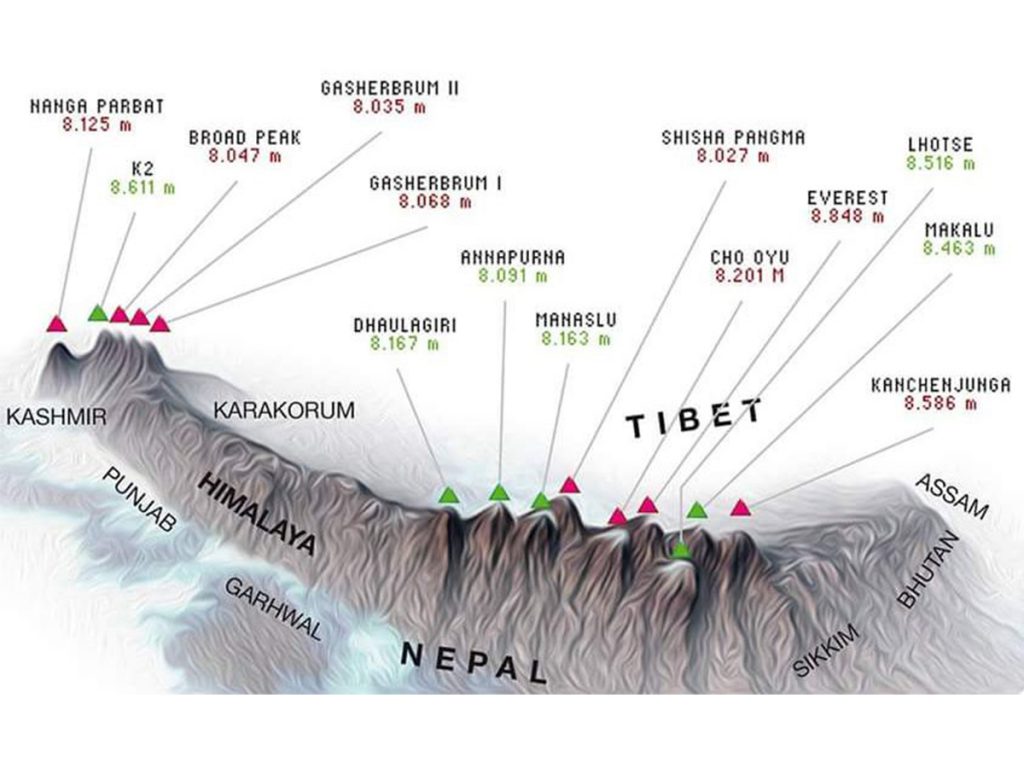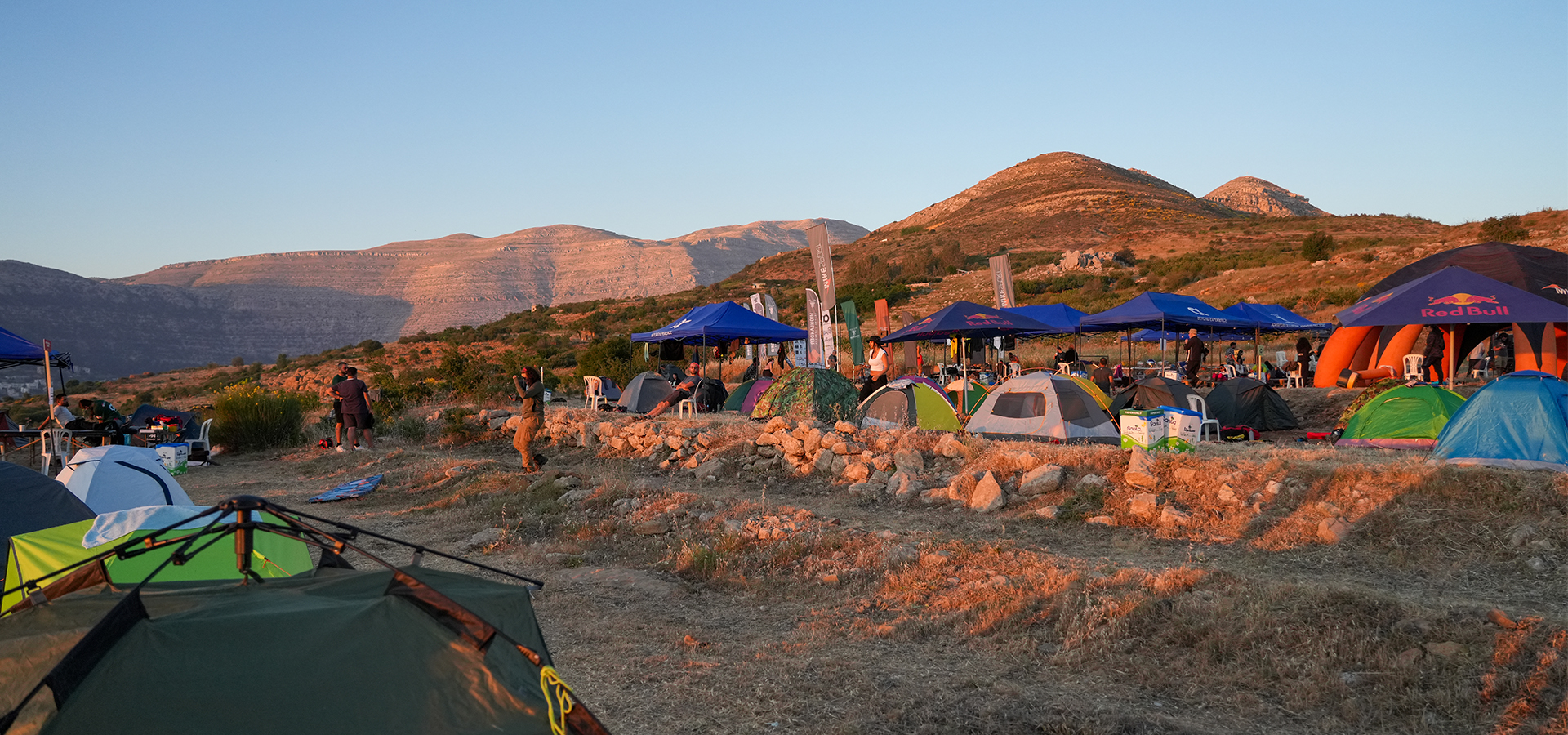
The Place where the Himalayas, the Karakorams and the Hindu Kush Meet!
- April 11, 2020
- 0
Himalaya-Karakoram-HinduKush Mountain System – 3 Moutain ranges – 1 System.
Have you heard of Jaglot ?
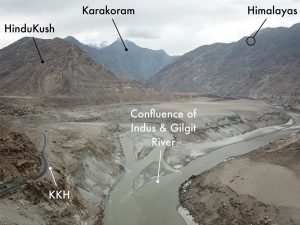
It’s a small Village located where the mighty Indus River meets the Gilgit River in Gilgit Baltistan. This place is considered the meeting of the three mightiest Mountain Ranges in the World, the Himalaya which is home of highest Peak in the World “Mt. Everest”8848m, the jagged Karakoram which is home to K2 Mountain the 2nd highest on earth 8611m & the third one coming from the North West, the Hindu Kush which is home to the mighty Tirich Mir (7708m) the highest Peak outside of the Himalayas-Karakoram Mountain complex.
Are the Karakoram or Hindukush sub Ranges of the Himalayas ?
The answer is both no and yes and it depends on how you want to answer. They are in pure scientific terms different Ranges separated by the Indus River and the Gilgit River but they are part of the same Mountain Complex that is referred to as the Great Himalayas.
The Himalaya:
The Himalaya form an arc of 2,400km long that separates the Indian subcontinent in the south from the Tibetan Plateau in the north. Many of the world’s major rivers, the Indus, the Ganges, the Brahmaputra and the Yangtze start their journeys in the Himalayas. The Himalaya are spread across five countries: Bhutan, China, India, Nepal and Pakistan (add to that the countries of the Sub-Himalayan ranges or the Great Himalya)
Himalaya means “abode of snow” and contain the world’s 3rd largest deposit of ice and snow on the planet. Only the Antarctic and Arctic have more. Altogether, the Himalaya is home to around 15,000 glaciers.
the Himalayas themselves stretch uninterruptedly for about 2400 km from west to east between Nanga Parbat 8,126m, in the Pakistani-administered portion of the Kashmir region, and Namjagbarwa (Namcha Barwa) Peak 7,756m, in the Tibet Autonomous Region of China. The Himalayas are bordered to the northwest by the mountain ranges of the Hindu-Kush and the Karakoram (Both are sub-himalayan-ranges) and to the north by the high and vast Plateau of Tibet. The width of the Himalayas from south to north varies between 200 and 400 km.
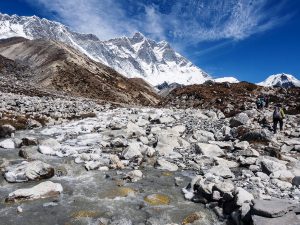
The karakoram:
The Karakoram is a large mountain range spanning the borders of Pakistan, China and India with the northwest extremity of the range extending to Afghanistan and Tajikistan. It begins in the Wakhan Corridor (Afghanistan) in the west and encompasses the majority of Gilgit-Baltistan (Pakistan) and extends into Ladakh (India) and the disputed Aksai Chin region controlled by China. It is the second highest mountain range in the world and home to K2 mountain (8611m the world’s 2nd highest peak).
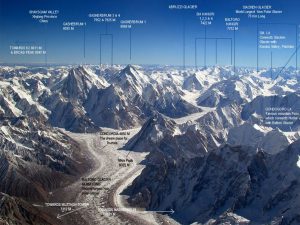
The Hindukush
The Hindukush is an 800-kilometre-long mountain range that stretches through Afghanistan,from its center to northern Pakistan and into Tajikistan.
It forms the western section of the Hindu Kush Himalayan Region and is the westernmost extension of the Pamir Mountains, the Karakoram and the Himalayas. It divides the valley of the Amu Darya to the north from the Indus River valley to the south. The range has numerous high snow-capped peaks, with the highest point being Tirich Mir or Terichmir at 7,708 metres.
The fourteen +8000m peaks:
